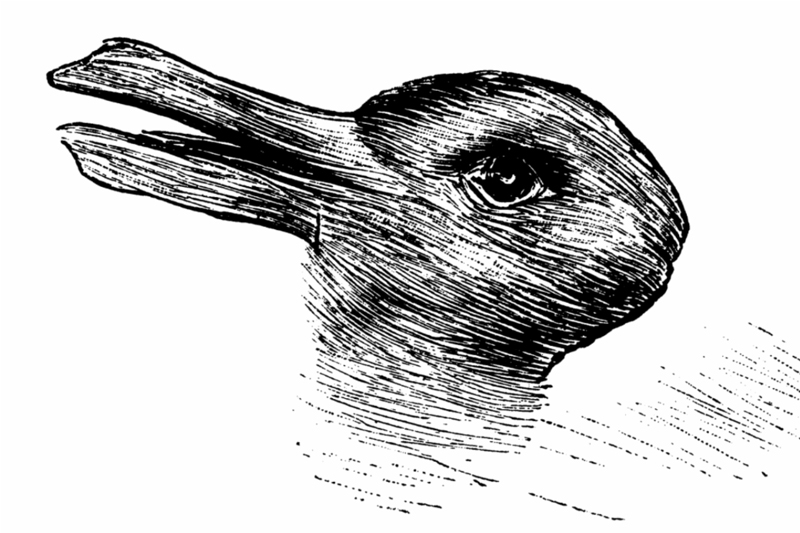“Picture your brain forming new connections as you meet the challenge and learn. Keep on going.” ― Carol Dweck, Mindset: The New Psychology of Success
According to Joe Dispenza, DC, and author of Evolve Your Brain, our ability to be neuroplastic, the ability to rewire and create new neural circuits at any age to make substantial changes in our quality of life, is equilavent to our ability to change our mind, to change ourselves, and to change our perception of the world around us, meaning our reality.
This requires changing how our brain automatically and habitually works. Please refer to my April email here for more data around this.
Here’s an example of how the brain’s plasticity works.
As you look at the photo, what image do you see?
For most people, they see a duck or a goose. The familiar image causes our brain to recognize a pattern in the shape of some type of bird. In the short period of time it took you to identify the image, a few hundred million neurological circuits fired in order for you to recall the word “duck” for “goose”.
In applying neuroplasticty, now look at the image and instead, find the rabbit. In this instance, your frontal lobe has to cool off those circuits firing that recall the image of a bird and instead reorganize its circuitry to recall an image of a “rabbit”.
This ability to make the brain override its habitual internal wiring and fire new patterns is how neuroplasticity allows us to change our thinking.(The duck-rabbit was “originally noted” by American psychologist Joseph Jastrow 1899
In this exercise, you now have access to a completely different perception and hence reality and once you do, the brain is permanently changed.
According to Joe Dispenza, DC, and author of Evolve Your Brain, our ability to be neuroplastic, the ability to rewire and create new neural circuits at any age to make substantial changes in our quality of life, is equilavent to our ability to change our mind, to change ourselves, and to change our perception of the world around us, meaning our reality.
This requires changing how our brain automatically and habitually works. Please refer to my April email here for more data around this.
Here’s an example of how the brain’s plasticity works.
As you look at the photo to the left above, what image do you see?
For most people, they see a duck or a goose. The familiar image causes our brain to recognize a pattern in the shape of some type of bird. In the short period of time it took you to identify the image, a few hundred million neurological circuits fired in order for you to recall the word “duck” for “goose”.
In applying neuroplasticty, now look at the image and instead, find the rabbit. In this instance, your frontal lobe has to cool off those circuits firing that recall the image of a bird and instead reorganize its circuitry to recall an image of a “rabbit”.
This ability to make the brain override its habitual internal wiring and fire new patterns is how neuroplasticity allows us to change our thinking. (The duck-rabbit was “originally noted” by American psychologist Joseph Jastrow 1899
In this exercise, you now have access to a completely different perception and hence reality and once you do, the brain is permanently changed.





